The content of the article
Coloring is gaining rapid momentum, more and more girls want to diversify their hair with bright shades, while maintaining individuality. The process of coloring does not represent special difficulties, the procedure can be carried out on dark and light hair. Experienced hairdressers have developed an effective technology that allows you to make coloring in the home. Consider the important aspects in order, we give practical recommendations.
What is coloring
Coloring of this kind is the processing of individual strands with two colors or more. Coloring can be done on hair of different lengths. As for the color range, you can use close or contrasting shades, it all depends on individual preferences.
If the coloring is done in natural tones, you will add additional volume to the hairstyle and make the haircut flowing, cascading. At the same time, contrast coloring gives hair originality, unique style and personality.
Most often, coloring is performed on blonde hair, but this does not mean that the procedure cannot be performed with dark-haired beauties. The only condition is that before you begin, lighten the strands into several tones. Coloring is considered convenient because you do not have to tint the roots. This feature is achieved by a smooth transition from the painted part to the natural.
What is the coloring
Depending on the technique, there is a rounded, radial, twisted, watercolor and full coloring. Consider each option in order.
- Round coloring. The technique is designed for long-haired girls, the technique uses about 3-5 shades. In order to carry out the procedure correctly, the head area is divided into squares of 2 * 2 cm. Coloring starts from the occipital region, gradually moving to the top of the head.In the process of coloring you need to alternate colors. After the curl has been processed, it is necessary to roll it into a bundle, and then twist the bun-bagel and fix it with barber clips.
- Radial coloration. To perform the staining with this technique, separate the parietal hairs and fix it. First, color the occipital area with the color you like, choosing individual strands that are 3 cm apart. After applying the pigment, wrap the colored locks with foil, go to the stabbed parietal part. Dissolve the hair in this area, select a few strands, keeping the symmetry. Color them with a second shade and wrap with foil too.
- Twisted coloring. The technique is comparable to the rounded technique with only one refinement. In this case, we stained the curls along the entire length, and the crowded coloring implies a horizontal application of the composition. To properly hold the technology, take a strand, put it on the palm. Dip the brush in the first pigment, draw a strip at the roots. Now moisten the brush in a different color of paint, make a strip just below.Simulate a zebra until you reach the tips. Optionally, you can vary the distance between the two colors. After application, twist the strands into a bundle, make a bagel and fix with clips. Perform manipulations with each lock separately.
- Watercolor coloring. Coloring is performed using shades similar to the color palette. It is important to choose colors that almost coincide with the natural tone of the hair. Thus, you will emphasize the native shade, making it deeper and richer. Choose 3-5 colors at your discretion, decide on the order of application (from dark to light and vice versa). Starting from the occipital zone, select one strand at a time, apply the first component in the list. Then take the second curl, paint it in the next color in the list. First, paint the left side, then the right.
- Full coloring. Coloring with this technique involves replacing the natural color with a different shade. After the hair is completely dyed, you can proceed to coloring the individual strands. It is necessary to choose a color palette based on the existing shade of the hair.As a rule, this kind of dyeing is done by a professional hairdresser. The master knows which shades to choose according to the color circle, so that the new full hair color is combined with the colored curls. Depending on the idea, you can choose from 5 to 20 shades, using them alternately.
Practical recommendations
Coloring is considered to be a difficult procedure, but only if the person does not have sufficient knowledge to conduct it at home. Use best practices to get answers to the questions in your head.
- Begin coloring in the early morning, do the coloring in natural light. Do not try to perform the procedure quickly, pay attention to detail. Each hair should be dyed thoroughly without visible "gaps".
- Do not immediately use ammonia or ammonia-free drugs (persistent dyes). To get started, select a palette of existing hair toners, experiment with them. An alternative are colored crayons for strands.When you realize that the image is perfect for you, you can wash off the “draft” version and start the procedure with resistant pigments.
- To prevent the dye from reacting with other hair care products, do not use foam, mousse, gel and varnish for three days before the procedure begins. Also during this period it is not recommended to wash your hair in order to create a protective barrier for the skin and hair in general.
- Before you dilute the paint, study the manufacturer's recommendations for each purchased composition. The advice is especially relevant if you use from 3 to 5 shades, while dyes are produced by different companies.
- To identify individual intolerance of components in time, test for an allergic reaction. Apply one drop of each composition on your wrist, wait 15 minutes, rinse and evaluate the result. If there is no itching, inflammation and irritation, start coloring without fear.
- Prepare for the procedure: change your clothes to old things, smear your skin along the hairline with petroleum jelly or a greasy baby cream. Take care of the necessary materials in advance, we will consider them below.
- As mentioned earlier, in the process of coloring the strands are wrapped in foil. The duration of exposure of each composition depends on the manufacturer, it is necessary to clarify in the instructions. Remove the foil in turn, first remove the paint that keeps less.
- In the process of washing the paint from the hair can not remove the foil from all strands at the same time, especially if using different shades. Dispense one curl one at a time and rinse it immediately, preventing mixing colors. After washing the pigment with shampoo do not forget to put a nourishing balm or mask.
Required materials and tools
- foil hairdresser or bakery;
- paint brushes (the amount depends on the shades);
- polyethylene or rubber gloves;
- oilcloth or hairdresser cape;
- comb with a sharp tip;
- fat cream or petrolatum;
- coloring pigment (number of colors at the discretion).
Coloring on blond hair
Experienced hairdressers recommend that fair-haired girls select additional colors in red, ashen, honey, chestnut shades. If you are dyed blonde, you can use absolutely any shades, ranging from acid-blue and pumping crimson, black.
Consider step-by-step instructions on how to make coloring at home on platinum and light brown hair.
- Take care of the necessary tools, cover the shoulders of the barber shop with a cape or put on old clothes. Read the instructions to the dye composition, lubricate the hair line at the forehead, behind the ears and on the neck with a greasy cream or petroleum jelly.
- If coloring will be done with a color change, first you need to apply a basic shade, wait for the required interval and wash off the composition. Then, additional colors are distributed to the dried individual strands, taking into account the chosen technique.
- After coloring each curl you need to wrap it in foil, and only after that proceed to the processing of the next. As a rule, the duration of exposure is 30-45 minutes (the exact interval is specified in the instructions).
- When the time expires, expand one curl, evaluate the result. If it was insufficient, increase the duration. In cases where the shade turned out desired, unroll one strand and immediately wash off the paint with shampoo. After all the hair has been released, cover the hair with balsam.
Coloring on dark hair
Dark hair dyeing with this technology is considered quite complicated due to the fact that you need to lighten up the hair. In this case, it is necessary to lighten only those curls on which additional colors will be applied.
Black and dark brown hair goes well with red, ashen, platinum and white flowers. However, it all depends on personal preferences, choose shades at your discretion.
- Prepare the necessary materials that may be required during the procedure. Dress in old clothes or cover your shoulders with a wrap. Read the manufacturer's instructions, lubricate the skin on the hairline with a greasy cream.
- Pick up the lightening composition, apply it on separate strands, wrap curls in foil, wait for the specified by the manufacturer period. After the allotted time has elapsed, wash the brondator, alternately turning each strand. Dry your hair.
- Apply additional colors to the bleached curls by means of which coloring will be made. Wrap, leave for 30-45 minutes, then begin to remove the foil from each curl in turn.After removing the foil, immediately rinse the hair with shampoo and plenty of water. Complete the procedure with a balsam conditioner.
It is easy to perform coloring at home, if you follow the practical recommendations and step by step instructions. To begin with, pick up the coloring technique, experiment using colored crayons or tonics. Decide on the range of additional colors, arrange them in the correct order (at the discretion).
Video: how to make hair coloring


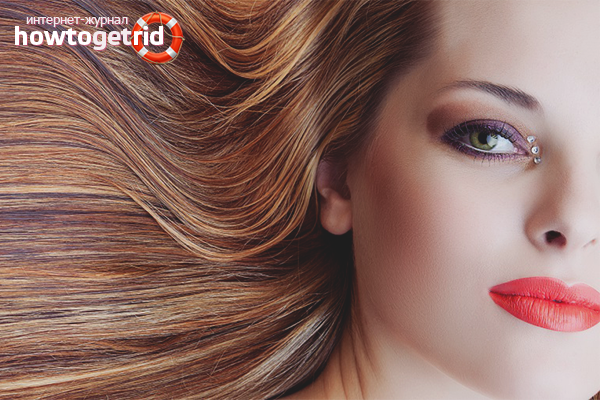
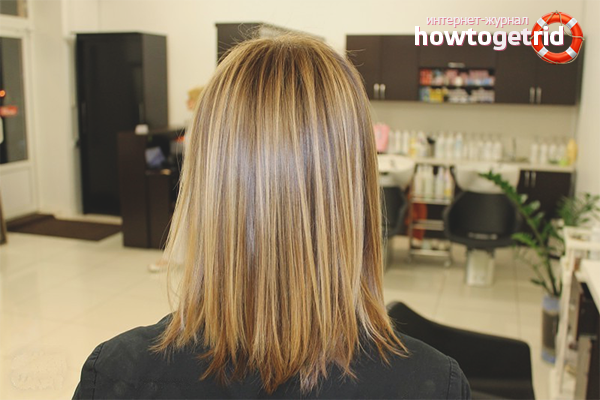


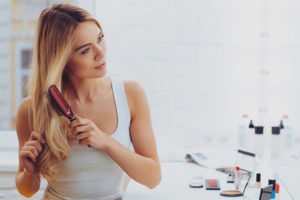


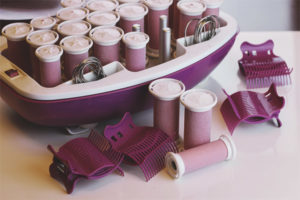
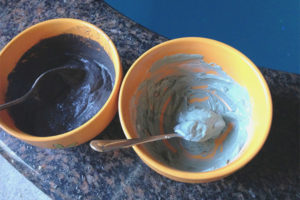
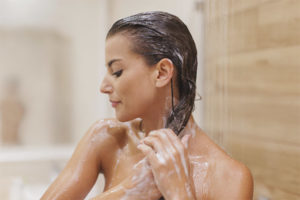
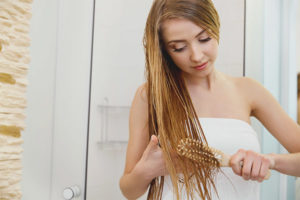
To send